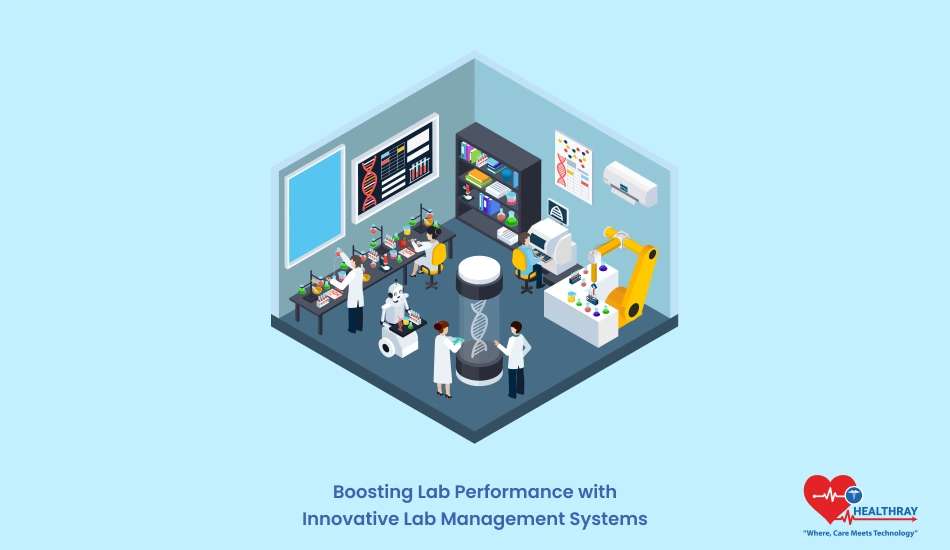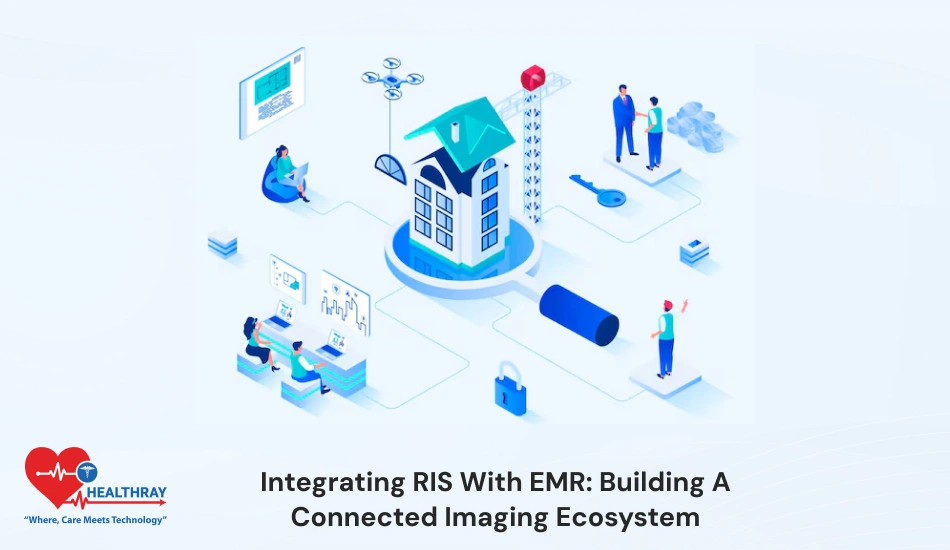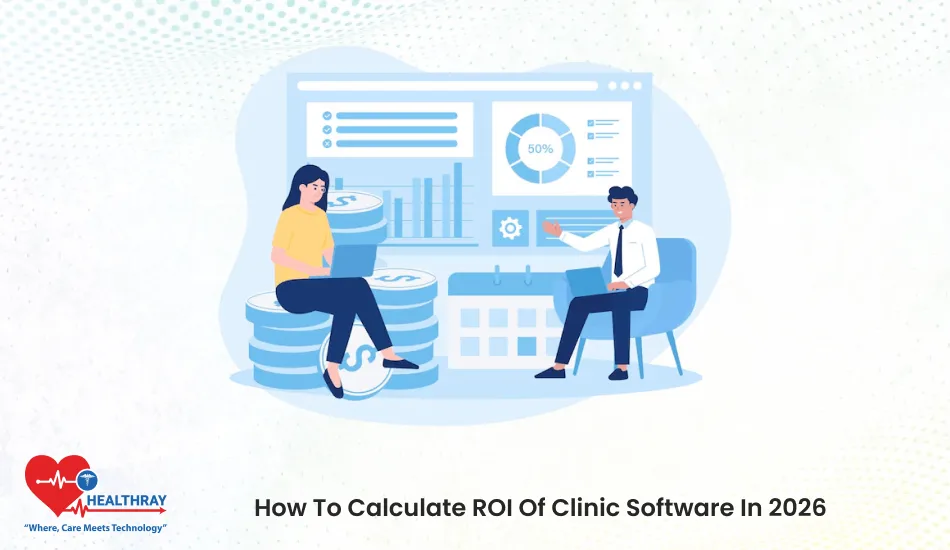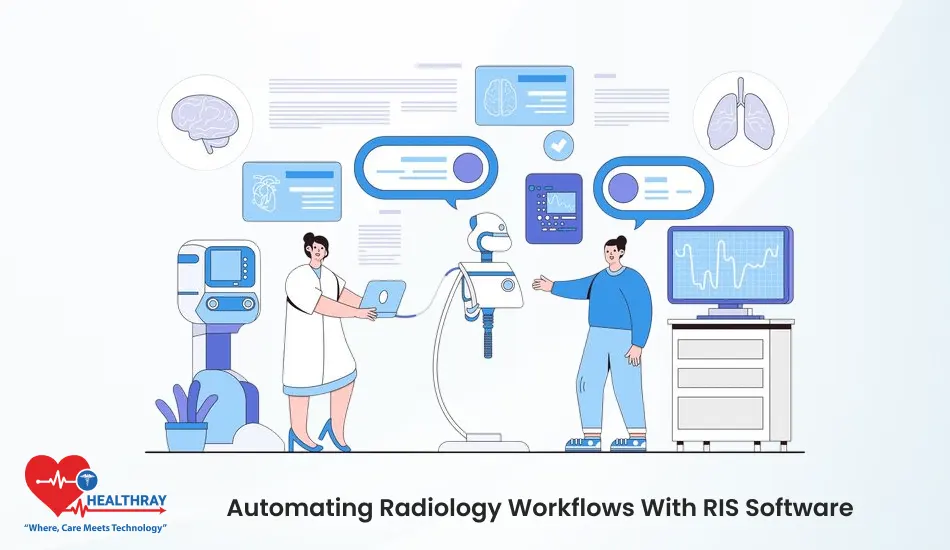Improving Lab Performance through Innovative Lab Management Systems
Optimization of Laboratory Management Innovations in Running a laboratory may be pretty cumbersome because it tends to deal with a lot of complicated motions, especially related to follow up and tracing samples, observance of statutory rules, etc.
Overstepping out of hand beats this easily over one’s already overstretched and congested pathology or clinical laboratory. However, for an LMS, it is a golden opportunity. The LMS automates routine day-to-day jobs such as sample tracking, data entry, and reporting. Advanced tools, like AI and real-time data access, can streamline workflows while minimizing the human errors that lead to inefficiency.
Whether a small pathology lab or multiple teams within a larger facility, the right LMS will increase productivity while saving time. But LMS is not this alone. While simply putting on the lab at the top notch is what other programs might just focus on, in the case of improving the performance entirely, here innovative features are those like automated reporting, compliance tracking, and cloud integration: keeping your lab compliant, efficient, and profitable.
In this blog, we are going to dive deeper into the effects of an LMS on lab activities and some emerging technologies shaping today’s laboratory setting. Be it cost cutting, accuracy boosters, or the smoothness you want things running, there must be a solution for you somewhere.
Why Lab Performance Matters for Pathology and Clinical Labs?
Having ownership or management responsibility of a laboratory goes beyond watching over day-to-day activities-it involves efficiency, accuracy, and compliance in everything that is carried out.
Be it pathology laboratory processing tens of thousands of diagnostic tests, or clinical laboratories that handle the routine patient sample processing, a step forward in terms of performance would either make or break the success of the lab.
Why then is performance important?
First of all, it affects your bottom line. Time and money are hand in hand with every minute spent on manual activities such as data entry or a mistake in tracking samples. This is particularly important in medical labs where turnaround time and accuracy make a difference between life and death. Patient diagnoses or treatments gone wrong, due to delay or errors may have horrific lifelong impacts.
For most laboratories, compliance with regulations is a big issue. Pathology and clinical laboratories are heavily regulated, and non-compliance will be punished either by audit or even closure in extreme cases. Optimizing performance involves tracking all the regulations without piling up papers or losing some critical audit trails.
Lastly, optimized lab performance can boost the morale of your teams. When your lab staff is shackled to mundane, manual processes and firefighting at every turn, burnout becomes a real concern. A well-optimized lab with streamlined workflows and effective systems will let your staff focus on high-level tasks instead of repetitive error-prone chores.
Innovative Features of Lab Management Systems
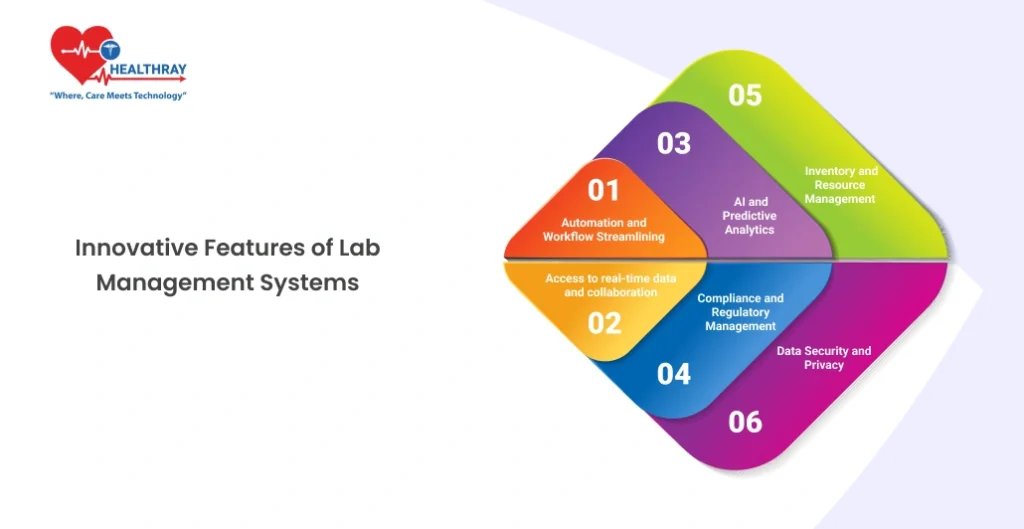
Sometimes, selecting a Laboratory Information Management System seems to be the most significant decision of all, since there are thousands of options. But when it comes to laboratory performance improvement, some features really make all the difference. Let’s get started and find out what are some of the most important features of innovative LMS tools in pathology and clinical labs:
Automation and Workflow Streamlining
An automatic great backbone represents an LMS. The era that had just arrived to wave goodbye to a paper-based workflow following, inputting sample data, and doing the inventory in your head was long gone. Such routine chores related to the tracking of samples, inputs, and production reports can be allowed with the minimum human interventive presence due to the routine chores it provides because of its kind of automation. It streamlines procedures-but cuts out significantly more human error, tension, and above all-time for the team.
This becomes helpful in those labs where hundreds of samples pass through each day. Your team will now work on other pressing work-such as the interpretation of results or challenging cases-without getting stuck with such monotonous data entry work.
Access to real-time data and collaboration
Probably the most impressive functionality of a current LMS is direct, real-time access to data. Whether operating one lab or many, the capability for constant monitoring of processes allows ongoing tasks to be completed according to schedule while tracking test progress in real time to stay on schedule.
A cloud-based LMS system will allow employees to work remotely yet access results from tests and reports as well as other data needed to function with little necessity to actually be in the lab.
This is very critical for pathology labs that rely on collaboration with clinicians, hospitals, or other labs. Real-time availability and access to current information can instantly streamline communication and may dramatically cut turnaround times.
AI and Predictive Analytics
The latest innovative tools of LMS have added artificial intelligence and predictive analytics in labs for greater efficiency. One feels that AI can possibly catch patterns that were never before seen by the human eye from data.
Predictive analytics will tell which trends or equipment failures are likely to happen in labs, for example; if a specific machine is expected to break down from its usage-based data, it alerts the concerned team so scheduled maintenance can be done before workflow is affected.
This forward-looking feature prevents costly downtime and ensures that lab operations run as smoothly as possible. It also optimizes staffing based on predicted busy times and workloads.
Compliance and Regulatory Management
No lab, including the medical variety, is anxious enough about the most important compliance obligations until regulations become pretty strict. What a great LMS does can make you appear completely compliant. These tools will assist you to comply pain-free, thanks to features of an LMS, which include the automatic-audit trail, maintenance records to be ready for inspection, and conformity of documents for regulatory compliance purposes.
This does not only reduce the possibility of costly fines but also the headache of preparing for audit. You can be certain that an LMS meets compliance needs automatically, in the background, and not going to cause too many headaches.
Inventory and Resource Management
The other feature the laboratories love is the effective management of their inventory and resources. This has an innovative LMS that tracks reagent, chemical, or any kind of laboratory supplies used; so you’ll always know how much is left and what is due for restocking. Thereby avoiding the waste associated with overstocking and loss from a delay occasioned by critical shortages.
Besides supplies, LMS can help in the proper use of laboratory equipment in such a way that they do not overutilize or underutilize. It would prolong their life and also function more efficiently in the lab.
Data Security and Privacy
More labs have actually been turning to cloud-based systems, that raises concerns with data security. An LMS is intended for the protection of sensitive lab information from patient history to proprietary researches. High security encryption, and access control besides compliance with your data privacy regulation such as HIPAA ensure safe laboratory access to all your information aside from unauthorized access or cyber threats against your laboratory.
Data protection today in the digital world is not just about technology but also about trust. Patients and clients would expect that personal information is being dealt with in proper security measures, and this is what an LMS can provide.
Cost and Time Savings through Efficient Resource Management
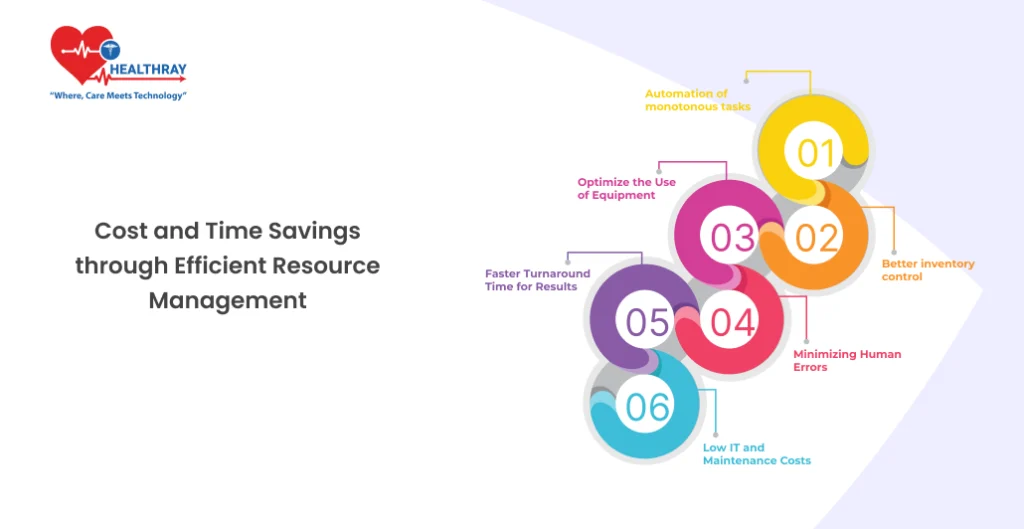
You have the cost of doing business running a lab. Those costs are quickly incurred and must then be managed. Everything based on factors such as staff, supplies, and keeping equipment up to date needs to be balanced and controlled to ensure that unnecessary buildup of cost does not occur or bottlenecks in your workflow. The modern LMS can play an important role in controlling those costs and improving productivity.
Automation of monotonous tasks
The LMS will save all your precious time and money by automating all routine tasks that take too much time and effort when done manually, such as the tracking of samples, inputting data into an excel sheet or test scheduling, which is extremely time-consuming when done manually. Automation of the same would save time for repetition and more toward high-value activity like data analysis or troubleshooting.
This would also mean managing lesser human resources in daily operations trying to downsize the workforce, cut costs, and improve overall productivity altogether.
Better inventory control
The most common cause of money wastage in most labs is poor inventory management. Sometimes delay causes by depletion of certain reagent or materials; it is usually costly. When more are in plenty, it would always result to wastage as the period to apply them is not long. An LMS which has its integration with managing the inventories will make sure that all your supplies come at an appropriate level.
It automatically monitors usage, flags running-low items, and even lets you set up reorder alerting. These reduce the possibilities of stock-out and prevent over-purchasing not needed-to-be-done, or otherwise-that allow you to use your resources more efficiently and reduced waste.
Optimize the Use of Equipment
Lab equipment is costly, and any lab would want to keep it in good working order. An LMS can track the usage of equipment, monitor the schedules for maintenance, and predict when machines are due for servicing before they break down. This prevents costly repairs and keeps downtime at a minimum.
But by analyzing the usage data of the equipment, LMS prevents lab bottlenecks. You will be ensured that any piece of equipment is being completely utilized without having a single machine overloaded. Thus, this can increase the life of the equipment with less number of early replacements, thereby saving funds.
Minimizing Human Errors
Mistakes are inevitable, but they can be costly in a laboratory. Errors in data entry, sample handling, or reporting can waste much time and result in retesting and sometimes a financial penalty. LMS minimizes human error since it automates processes and insists on strict workflows that ensure accuracy and consistency in data.
This leads to reduced error, rework, and waste as well as lower operational costs. On the other hand, it also means improved quality in the overall lab results that automatically culminate in trust among clients and patients.
Faster Turnaround Time for Results
Time means money, and short turnaround time on the return of test results mean that you would be able to handle more tests without increasing overhead. An LMS accelerates the workflow in the sense that it automates the steps usually taken in the processing of samples for testing, running tests, and coming up with reports. That would simply mean you are putting more work in your lab for the purpose of ensuring that, by doing that, you increase your access to many clients or patients in a given time period.
You might achieve top-line growth by accelerating your lab’s velocity, bringing you success without increasing your cost of doing business—a home run for any laboratory owner or manager.
Low IT and Maintenance Costs
It becomes too expensive to maintain multiple systems in terms of inventory, workflow, data entry, and compliance. In contrast, one single LMS can replace all the need to have multiple software systems in order to streamline your operations while lowering IT overheads and maintenance cost.
Your lab saves on support, licensing fees, and training because of having fewer systems to maintain. This will save lab time and some money while it also smooths out operations for all of the teammates.
Future trends in Lab Management
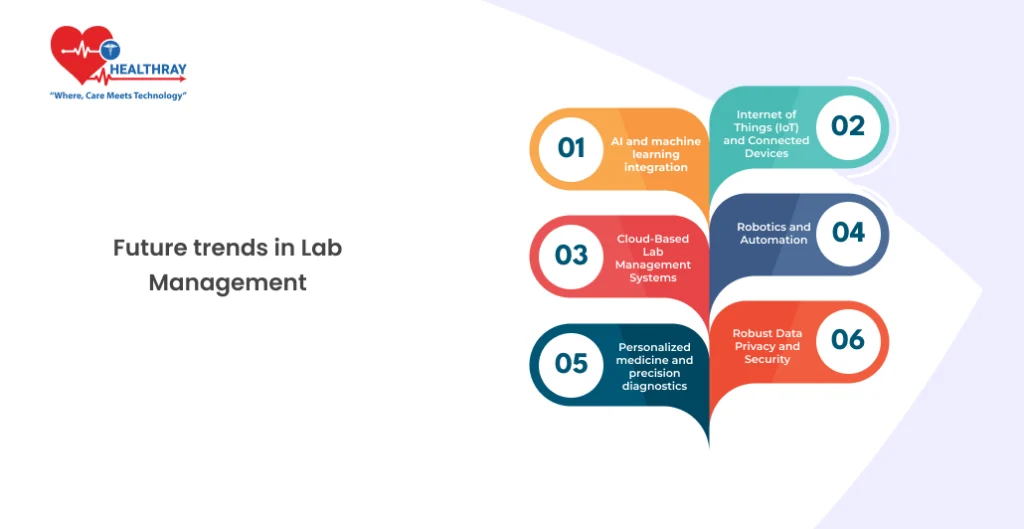
Rapidly advancing technologies and innovative solutions change the face of the future lab management-the labs run smarter, more precisely, and far more connected. It is therefore paramount to stay on top if one owns or operates a pathology or clinical lab to have yours running at optimum performance. Here are the key trends that reshape the lab management landscape:
AI and machine learning integration.
Artificial Intelligence and Machine Learning have recently become fast necessities of lab management. The technologies scan large datasets to identify patterns; they even use historical data for prediction. The applications include all aspects, such as workflow optimization up to anomaly discovery in test results.
For instance, AI can predict equipment failures before they happen, thus providing the possibility of preventative maintenance that reduces downtime. Machine learning algorithms can also help in processing complex data more rapidly, thus providing insights that a human analyst may not notice. With AI and ML increasingly being integrated into Laboratory Management Systems (LMS), labs will experience improvements in efficiency, accuracy, and decision-making.
Internet of Things (IoT) and Connected Devices
The Internet of Things is a technological advancement which has been able to transform laboratory operations. Here, through integrating equipment and devices from labs in a central system, they are in the position to track any piece of equipment in real time, get data automatically, and also supervise different laboratory procedures from remote sites.
Imagine when your equipment is sending alerts to the maintenance personnel that it needs some maintenance or a system automatically tracks the levels of inventory and orders supplies before they run out.
This connectivity helps in running the lab smoothly, with minimal downtime, and fewer human errors. IoT in labs is also supporting energy management, optimization of resources, and overall sustainability.
Cloud-Based Lab Management Systems
The cloud-based lab management systems are getting popular quite fast because they are flexible and accessible. Data and processes can be easily transferred to the cloud, and laboratories can share data in real time with their team members from any corner of the globe.
This is very convenient for laboratories that access more than one location or have an urge to collaborate with other facilities like neighborhood hospitals or research institution. Cloud computing systems reduce a laboratory’s use of on site IT infrastructure cutting costs and thereby scaling operations are easier. Besides, security in cloud systems further develops so the sensitive data used in the laboratory remains safe or compliant with particular regulations.
Robotics and Automation
Even though modern labs already incorporate automation, robotics brings automation into a new dimension. Robotic systems automate repetitive tasks such as sample preparation testing and analysis data thus reducing the chances of human error and speeding up workflows.
These will ensure that, in high-throughput labs, samples involved are numerous and that accuracy and reproducibility are provided each time.
These systems will liberate lab personnel to carry out more intricate functions requiring human intuition. In the next few years, most of these labs will adopt these systems because robotics has become cheaper and available to even more people.
Personalized medicine and precision diagnostics
As personalized medicine becomes the mainstream approach to healthcare, the labs are going to play an important role in providing precision diagnostics. Laboratory management systems are taking on the newer genomic and molecular data that’s required for providing treatments tailored specifically to individual patients.
It can especially refer to pathology labs giving in for genetic markers-based diagnostic laboratories. If such LMSs would possibly support and analyze this sort of data, a lot would quickly see these requirements that enable their precision diagnostic work ensuring lab testing falls in as one aspect of emerging rapid changes healthcare.
Robust Data Privacy and Security :
The importance of protecting the information in labs has never been greater due to the mushrooming of cloud-based systems and digital data. In the future, labs will ensure encryption, multi-factor authentications and access control systems to prevent unwanted access over such information.
Most of the data transferred contains patient information and proprietary research. However, HIPAA compliance is increasing day by day. The modern LMS should possess maximum security features against cyber attacks and maintain standards in relation to privacy.
Selecting the Right LMS for Your Lab
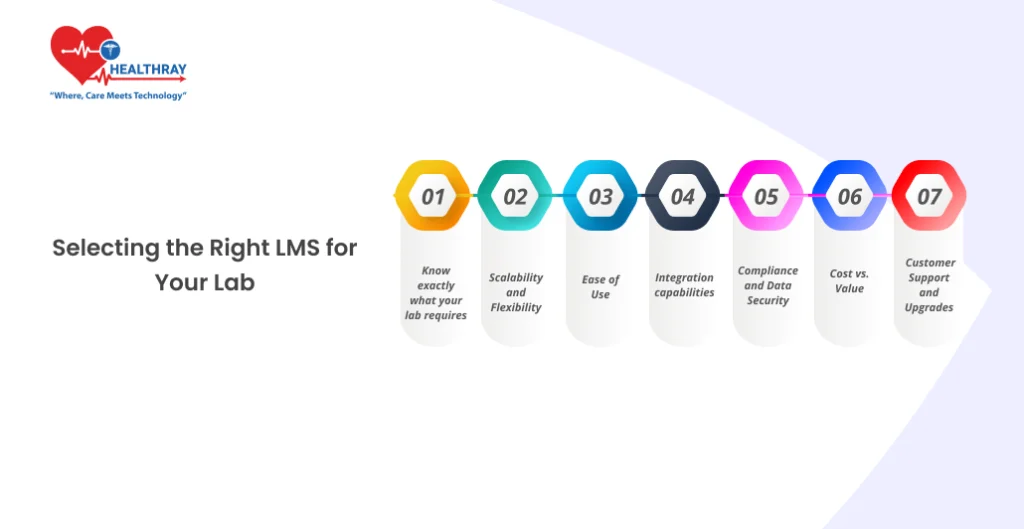
One of those decisions that will make all the difference to lab efficiency, cost management, and compliance is indeed the right choice of Lab Management System (LMS) for your lab. Irrespective of whether it is a pathology lab or a clinical testing facility, the proper LMS will surely help you simplify your operations while focusing on quality, timely outcomes.
However, given the fact that there are a couple of them around, it becomes tough to tell which suits your needs best. The following are the key aspects as you make your selection:
Know exactly what your lab requires
No two labs are alike, and the LMS of your choice must reflect the specific workflows, volume, and services of your lab. Take a step back and think about your lab’s specific needs. Do you have a problem tracking samples? Have you struggled keeping up with regulation compliance or having audit trails?
Are you looking to access real-time data across locations?
Start by identifying pain points in current processes and seek an LMS that addresses these. If the number of tests is high, automation and real-time monitoring could be priorities. If compliance is a concern, systems with good audit and documentation features should be the focus.
Scalability and Flexibility
As your lab grows, so do your needs. It means that the LMS that is chosen must be one that can grow with you in size, volume of testing, or number of locations that you expand to. Scalable LMS is no obsolescence for the changing system in a laboratory. Flexibility is also on par.
The ideal LMS should be customized for your lab specific workflows. This might mean adding custom fields, automating tasks according to what your lab wants, or the integration feature of already installed instruments and software in your lab. One-size fits all approach does not fit any particular lab so find an LMS that’s designed according to your requirements.
Ease of Use
The system should be easy and efficient to use by your team. A complicated or unintuitive system can be frustrating and slow down your lab’s workflow instead of speeding it up. Look for an LMS with an easy-to-use interface and simple navigation.
The learning curve should be low so that your staff can pick up the new system quickly and get the most from it. Another factor is the quality of training and support services the LMS provider will offer. Quality support can make all the difference between your onboarding the new team member or solving technical issues.
Integration capabilities
Your LMS should not run in silo. It should easily and seamlessly integrate with all other software and instruments used in your laboratory. In fact, it will either be some data analysis software, billing, or even your actual lab instruments to which your LMS should easily interchange data between disparate platforms.
Effective integration will reduce manual entry as much as possible and ensure the information flows seamlessly from one system to another. It won’t duplicate at all, has lesser chances of errors, and gives a clear view of everything happening in your lab at one place.
Compliance and Data Security
It is not an option but an obligation in areas that are controlled like pathology and clinical laboratories. Thus, in these areas, HIPAA, CLIA, ISO, etc shall be followed verbatim. The good LMS will automatically make sure of all compliance through maintenance of detailed audit trails, reports on regulatory needs and all relevant documents in safe storages.
The next concern is security. Laboratories handle very sensitive information related to a patient. So, your laboratory developed LMS should be of utmost security features like encryption, safe user login and authentication, backup of data, and even be in accordance with the data privacy acts. Thus, it is regulatory compliance that makes your lab safe from financial and legal issues.
Cost vs. Value
These costs will always be part of the landscape, but value any LMS will bring in making this decision is also vital. An LMS right for a lab is going to save them time, reduce errors, and increase performance, thus saving in the long run. Note how the features play into your lab’s needs and how the system will help avoid costly mistakes, improve turnaround times, and in general increase efficiency.
Remember, an LMS may seem cheap in the short run; however it can actually be a very valuable return where significant gains in productivity and accuracy occur over a longer time scale. Compare short-term costs with long-term benefits, and choose a system that best offers return on investment for your lab.
Customer Support and Upgrades
Technology changes overnight as does your LMS. The proper provider shall introduce to you the upgrading of the system plus its current newly made changes. Quality customer support has also to be evaluated. An LMS shall never be something for where the slow team will have hard time just right away solve an issue just immediately they emerge.
Conclusion
In today’s fast-paced and complex lab environment, embracing innovative Lab Information Management System (LMS) is a must. Small pathology labs as well as the management of a large clinical testing facility will see an impressive increase in lab performance by automatically taking out all repetitive tasks, enhancing accuracy, and streamlining workflows. An LMS will free you up to focus on doing what you do best-by giving you automation, real-time access to data, AI-driven analytics, and full compliance management.
On top of all this, optimum resource management, reduction of human error, and an element of regulatory compliance will save time and lower operational costs in your lab for enhanced profitability.
There is more promise for the future with AI, IoT, cloud-based systems, and robots that can do everything possible. These changes in lab management make labs run more efficiently and flexibly in the most demanding tasks. A bright future of lab management beckons with this set of right tools in hand for the future and the present as well.
By carefully selecting an LMS that fits your lab’s unique needs and can grow with you, you’ll set the foundation for long-term success, improved productivity, and enhanced performance. Now is the time to invest in the future of your lab, ensuring that you’re not just keeping up with the industry but leading the way.
